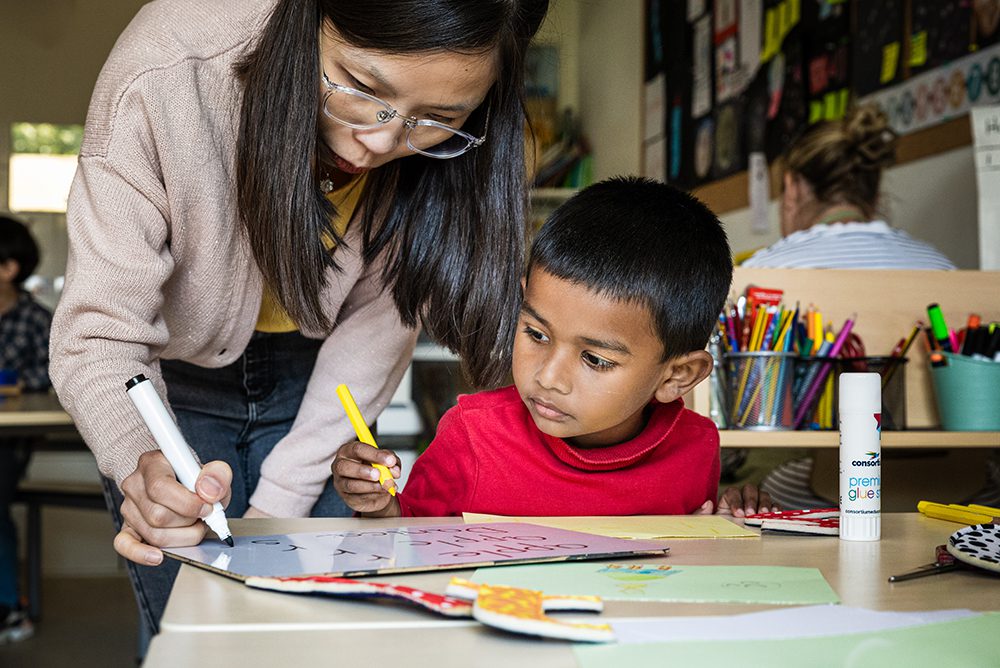
The power of home languages in multilingual education
In both international and Dutch schools in the Netherlands, students from various corners of the globe bring with them a wealth of linguistic heritages. While many schools prioritise the language in which they teach, nurturing one’s home language(s) is crucial for effective language acquisition.
By Anne-Marie van Holst, Director Optimist International School
As a school we specialise in this area, continually evolving to support students on their multilingual journey.
A strong emphasis on acquiring the school or host country’s language is evident in schools worldwide. This focus is essential for integrating into the local community, fostering communication, cultural understanding, and insights into societal dynamics of the host country.
Programmes such as NT2 (Nederlands 2e taal) in Dutch schools or special Dutch language classes and EAL (English as Additional Language) / ESL (English as Second Language) in international schools, all aim to help bridge the gap for non-native speakers.
At some schools there is an obligation to only speak the school language, however, a lot of research demonstrates that this is not the right approach. Allowing room for students to speak their home language at school plays a crucial role in the social, emotional and cognitive development of young newcomers.
Importance of development of home languages
When students are still learning the school language, it can be a challenging adjustment, often leading to feelings of exclusion and isolation. Developing basic interpersonal communication skills, such as social language, can take anywhere from six months to two years, while cognitive academic language proficiency may require at least five years. This extended language adjustment period can negatively impact students’ motivation as well as their overall development if they lack opportunities to express themselves.
How home languages help with learning
Recent research in Haarlemmermeer by Verwey Jonker shows that this language gap can affect students’ engagement in learning, leading to demotivation. Speaking their home language provides relief and clarity for many students, contributing to their socio-emotional development, progress and achievements in school.
Dr. Jim Cummins, a prominent researcher in bilingual education, also supports this idea. He highlights the positive correlation between home language development and the acquisition of new languages. According to him, proficiency in one language often facilitates the learning of another, maximising a child’s potential.
Furthermore, language and conceptual development are linked. Thematic education with appropriate language support offers numerous opportunities, connecting with students’ experiences and helping them to articulate their thoughts.
Language diversity
Fostering language diversity in the classroom promotes mutual understanding, respect and the preservation of cultural heritage that is embedded in every language. Embracing diversity is essential for schools, enabling all students to explore beyond their boundaries and gain insights into different cultures and backgrounds.
Multilingual classrooms
Cummins suggests that classroom instruction should promote a students’ flexible and strategic use of their linguistic repertoire in regards to their academics. Embracing trans-language learning allows schools to harness multiple languages, enabling students to use various linguistic resources to interact with the curriculum.
Students should feel empowered to express themselves in any language they feel comfortable with as this motivates them to utilise their existing language skills. This not only boosts their confidence, but also fosters an interest in English along with other languages.
Many schools are also certified Language Friendly Schools, which is a network of schools aiming to create an inclusive and language friendly learning environment.
Support and resources
Some students may experience a “silent” or non-verbal period, which can extend up to six months for younger learners. In these situations, the parents play a pivotal role and it is encouraged for them to maintain speaking their first language(s) at home, helping students to preserve their parents’ languages while being exposed to their learning language.
Technology aids language development; translation apps and earphones enable non-English-speaking students to participate in English-based activities. This allows them to express thoughts, produce work and conduct research in their native languages.
Assessing students’ skills irrespective of language offers a deeper understanding of their capabilities. The use of instructional methods like “comprehensible input”, TPRS (Teaching Proficiency through Reading and Storytelling), and Talk4 Writing are ways to engage students in language acquisition through storytelling, integrating gestures, actions and visual aids.
This article was also published in IamExpat in October 2023.
